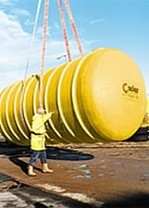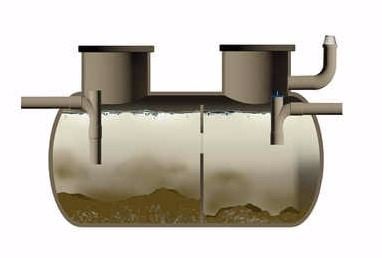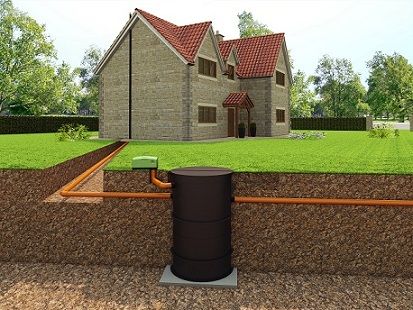Sewage Treatment System Options and Costs
Off-Mains Sewage Treatment Options
Cesspools

A Cesspool is an enormous, fully sealed underground wastewater holding tank having only an inlet and no outlet. A cesspool is designed to hold all sewage and wastewater effluent and does not carry out any treatment of the sewage whatsoever. It is also sometimes refered to as a Cesspit.
Many people also to refer to their septic tank as a "Cesspit". You MAY have a cesspool or it may be a septic tank. If it has an outlet, irrespective of the size of the tank, it is a septic tank, not a cesspool.
- A cesspool (cesspit) simply stores sewage and can only be emptied via a suction tanker.
- The installation cost and annual running cost of a cesspool is prohibitive.
- Cesspool units should only be installed as a last resort where a septic tank or treatment plant would not be possible, due to the lack of a watercourse, high winter water table, installation in a Groundwater Source Protection Zone, or the wrong type of soil for a Drainage Field to be installed.
- Running costs for a family of 4 are about £7000 to £9000/year
We always consider the options that are available to your site and we can give a report and quotation for the preferred system.
Rainwater must be kept out of all sewage systems.
Septic Tanks

- The soil must be able to soak away the required volume. Clay soils will NOT support soakaways.
- The water table or bedrock MUST NOT rise to within 1 metre of the bottom of the soakaway gravel under the pipe at any time. This means that your water table must never rise to within 2 metres of ground level.
- The site must not be in an E.A. Inner Groundwater Source Protection Zone. Ring Crystal Tanks to determine this.

Typical installation costs are between £6000 and £12,000, depending on the type of plant and the ground conditions of the site.
